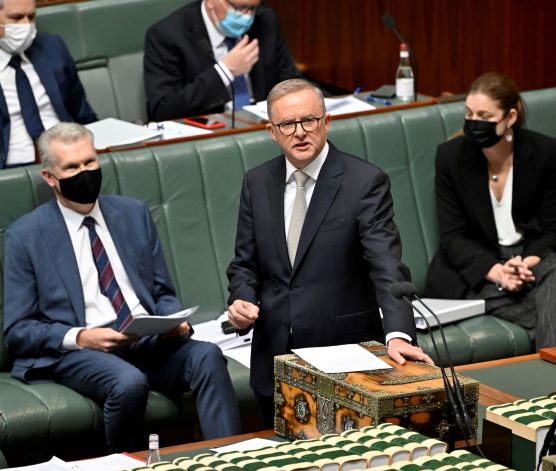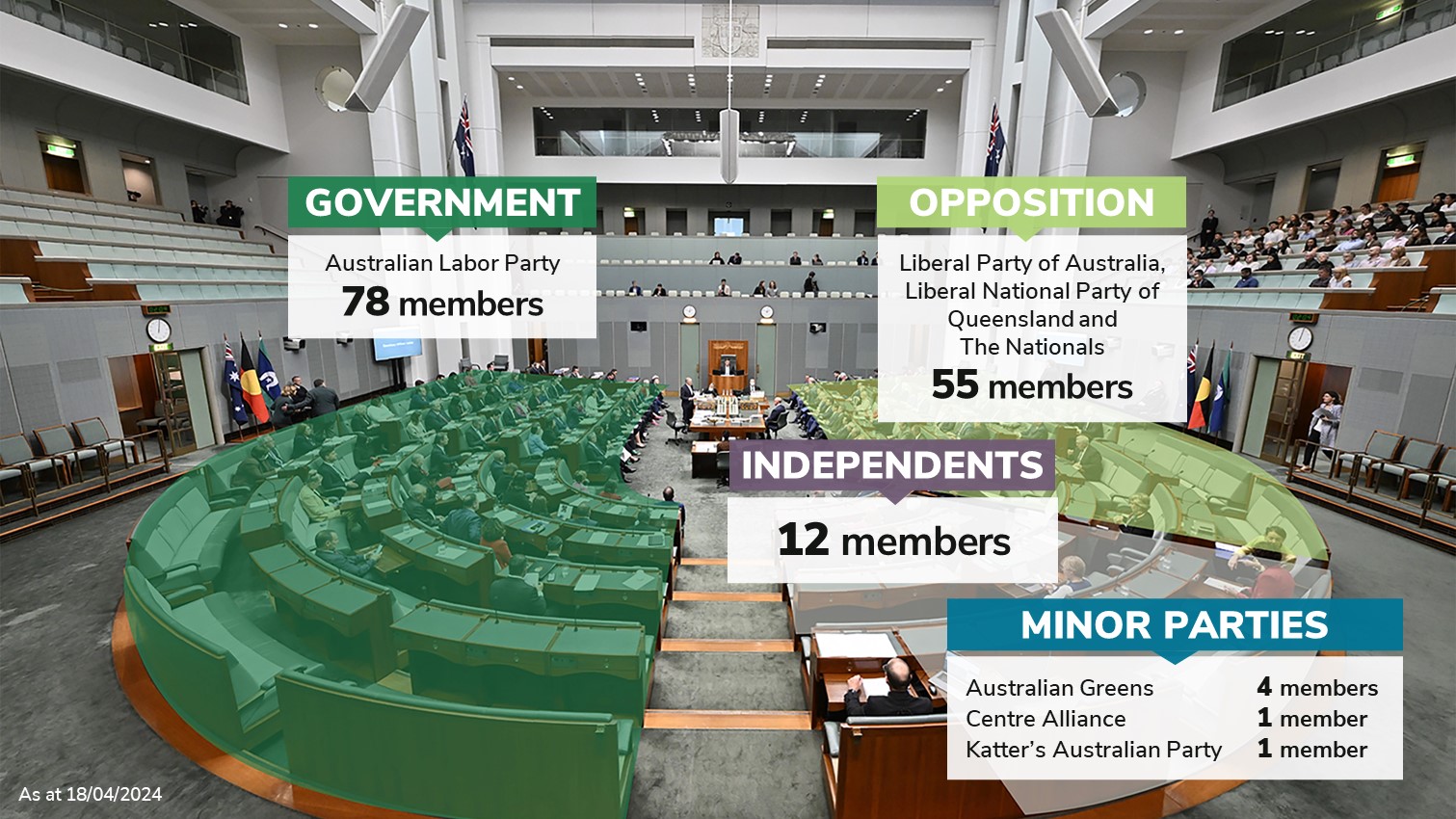Government
This fact sheet explores the responsibilities of the Australian Government, how it is formed, minority government and the principle of responsible government.
What will I learn?
- The government is the party or coalition of parties with the support of the majority of members in the House of Representatives.
- The government develops policies and puts laws into action.
- The leader of the government is the Prime Minister.
Curriculum alignment
Year 6 AC9HS6K06
Year 7 AC9HC7K01
Year 8 AC9HC8K02
Year 10 AC9HC10K01
Year 10 AC9HC10K02
Who is the government?
In Australia, the government is the party or coalition of parties with the support of the majority of members in the House of Representatives. The government is responsible for coming up with ideas for how to run the country. They make policies – plans of action –, propose new laws and put new laws into action for Australia.
Forming government
Government is formed in the House of Representatives. The party or coalition of parties that has the support of the majority of members in the House is the government. They remain the government as long as they have the support of the majority of members. The government rarely changes outside of a federal election.
Although government is formed in the House, there are also members of the government in the Senate. The government may or may not hold the majority of seats in the Senate.
Usually, a single party or coalition of parties is voted in with a majority of members in their own right, which is known as a majority government. If, after a federal election, no political party or coalition of parties achieves a majority in the House, it is called a hung parliament. It is still possible for a government to be formed if a party can reach majority support through agreement with independent and/or minor party members. This type of government is known as a minority government .
Government responsibilities
The responsibilities of the Australian Government include:
- developing national policies, for example, plans for managing trade, foreign affairs, immigration and the environment
- introducing bills – ideas for new laws or changes to existing ones – into Parliament
- putting laws into action through government departments
- making important decisions on behalf of Australians, such as whether or not to send Australian troops to war zones
- representing Australia overseas, through key spokespersons such as the Prime Minister and the Minister for Foreign Affairs.
The Prime Minister speaking from the Despatch Box in the House of Representatives

DPS Auspic
Description
The Prime Minister stands and speaks at an ornate wooden box – a Despatch Box – in the House of Representatives. There are books on the table in front of him and people sitting on green benches in the background.
Copyright information
Permission should be sought from DPS AUSPIC for third-party or commercial uses of this image. To contact DPS AUSPIC email: auspic@aph.gov.au or phone: 02 6277 3342.
The Prime Minister speaking from the Despatch Box in the House of Representatives

DPS Auspic
Description
The Prime Minister stands and speaks at an ornate wooden box – a Despatch Box – in the House of Representatives. There are books on the table in front of him and people sitting on green benches in the background.
Copyright information
Permission should be sought from DPS AUSPIC for third-party or commercial uses of this image. To contact DPS AUSPIC email: auspic@aph.gov.au or phone: 02 6277 3342.
Roles within the government
The leader of the Australian Government is the Prime Minister, who by convention – tradition – is a member of the House of Representatives. They are picked by their party to lead their team and have the power to choose other members of the government for important roles. The Prime Minister gives areas of responsibility for how Australia is run – a portfolio – to some members of the government who become ministers.
Members of the government who are not ministers are backbenchers. They do a range of work for the government, including researching, participating in committees, making speeches and voting on bills.
Responsible government
Members of the government must be members of Parliament. This is part of the concept of responsible government. Because a party or coalition of parties must keep the support of the majority of members in the House, the government is accountable – responsible – to the Australian Parliament.
In Australia, the principle of responsible government works together with the principle of the separation of powers to guide the way in which law is made and managed, and to prevent any group having all the power.
House of Representatives current numbers

DPS AUSPIC/Parliamentary Education Office (peo.gov.au)
Description
This image shows the current number of members in the House of Representatives from each party:
Government – 94 members
- Australian Labor Party
Opposition – 42 members
- Liberal Party of Australia (18)
- Liberal National Party of Queensland (16)
- The Nationals (8)
Minor parties – 3 members
- Australian Greens (1)
- Centre Alliance (1)
- Katter's Australian Party (1)
Independents – 11 members
As at 5 December 2025
Copyright information
This work is licensed under a Creative Commons Attribution-NonCommercial-NoDerivs 3.0 Unported License.
You are free to share – to copy, distribute and transmit the work.
Attribution – you must attribute the work in the manner specified by the author or licensor (but not in any way that suggests that they endorse you or your use of the work).
Non-commercial – you may not use this work for commercial purposes.
No derivative works – you may not alter, transform, or build upon this work.
Waiver – any of the above conditions can be waived if you get permission from the copyright holder.
